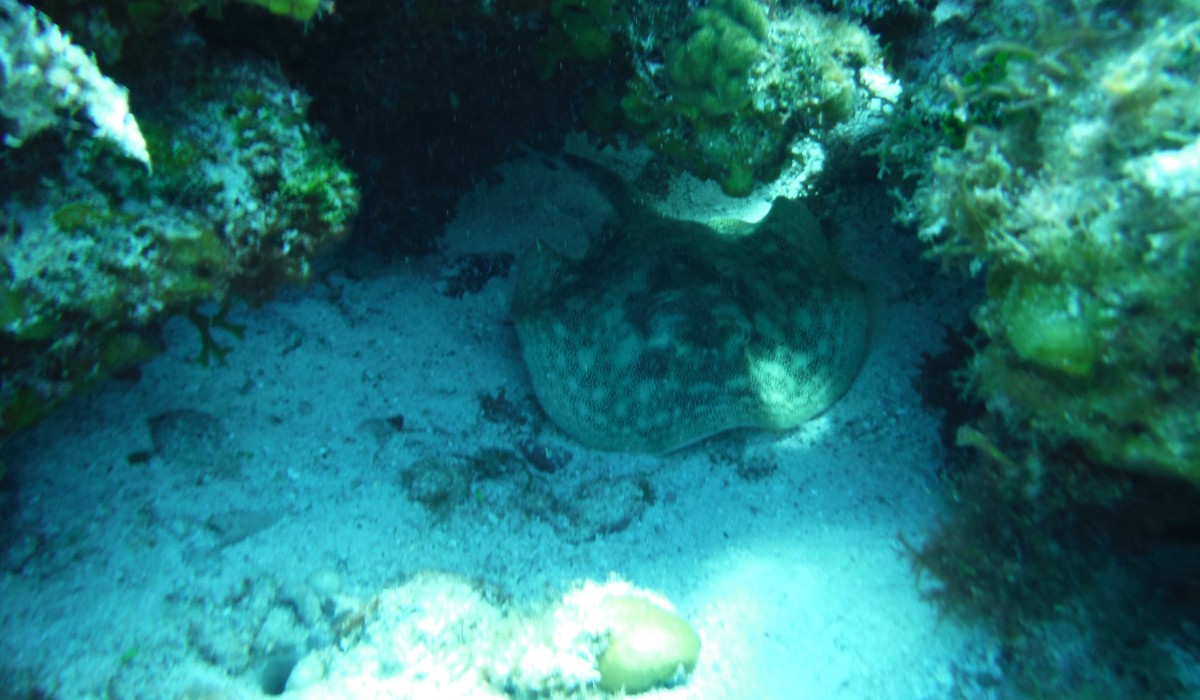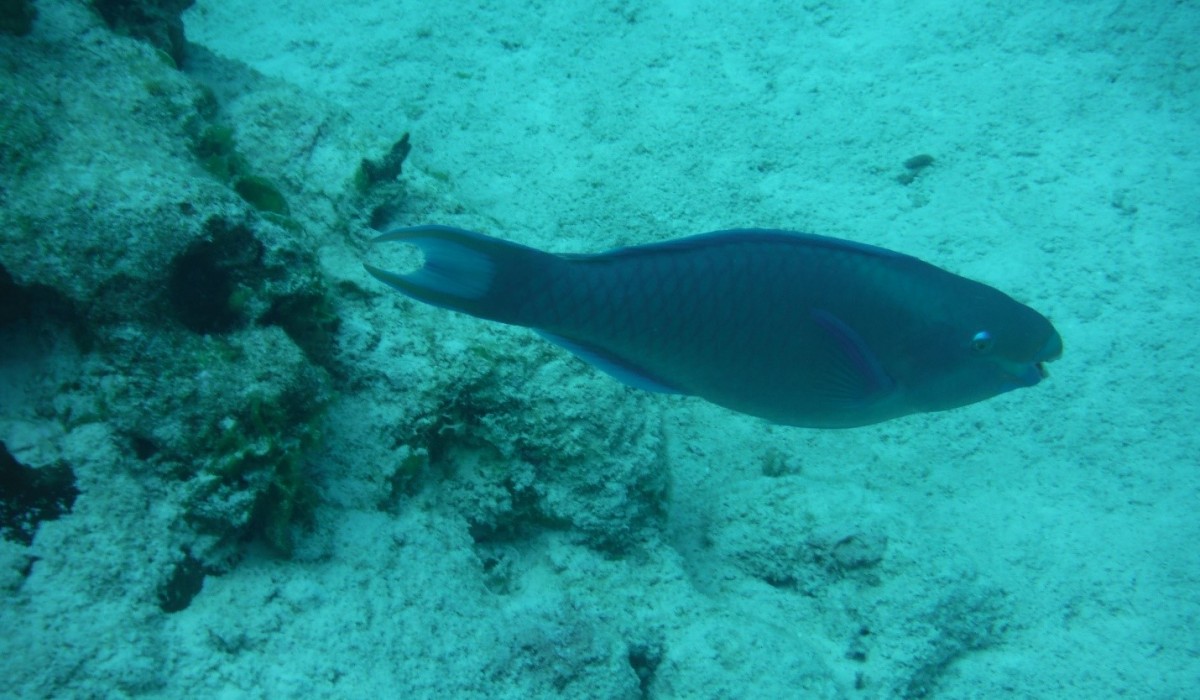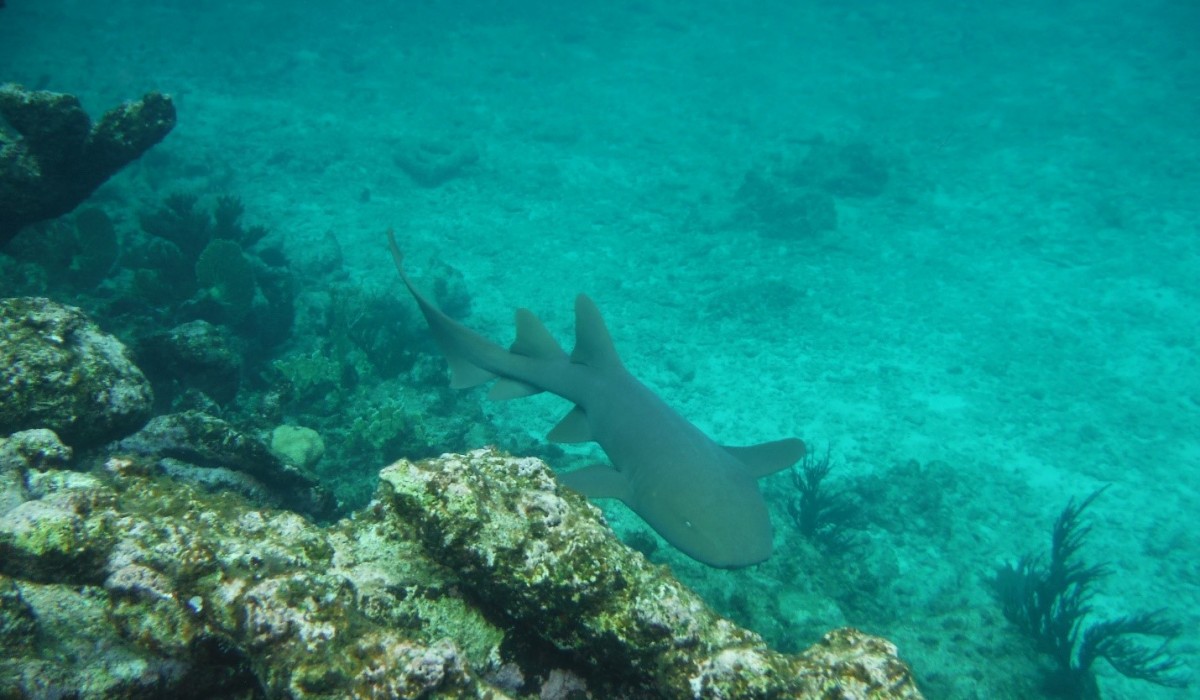Today was the ninth day of our Bahamian adventure at the Gerace Research Centre and we started our research projects today. The Wittenberg students were given the morning off from snorkeling to get into small groups and form ideas for a project that can be completed by the end of the trip. Many students were able to place subject area and organisms of interest on sticky notes and place them in a common area to try to find other students that have similar interests. After like-minded individuals got into groups, we were able to explain our ideas to our three professors and, with their help, refine and focus our experiments. In the end all of the students formed questions and hypotheses for their research projects, and were encouraged to observe their creatures of interest in the evening field journey.
On the way to lunch at the GRC (Gerace Research Centre), one of the students spotted an odd shape in the water, and upon further investigation, it was determined that these were in fact dolphins in our very own Graham’s Harbor. Four dolphins had made their way to the waters near the research center and were spotted jumping out of the water and being extremely playful. After lunch we were able to gather our equipment and pile onto one of the GRC’s trucks and set out on our adventure destination for the day: Snapshot Reef.
On the journey to Snapshot Reef, approximately a thirty minute drive away from the GRC, the Wittenberg Students practiced identifying San Salvador bird species with Dr. Phillips, our local ecologist. There were both male and female Kestrels, Osprey, Kingbirds, and various other species. Once the truck arrived at the beach near Snapshot Reef, we all unloaded rather haphazardly. We emerged onto the beach and place our gear on our towels, recorded the weather and GPS location, and determined the objective for the trip, then it was time to get into the water.
Snapshot Reef lays quite a ways out from shore marked by a single orange buoy undulating on the water’s surface. We swam out in various groupings, our lack of cohesion due to the severely rocky shore impeding on successful fin placement. Due to this, several students were able to get to the reef at a much more hastened pace and were able to capture pictures of a Nurse Shark near the reef. This was an incredible site due to the fact that sharks normally stay much father out from the islands beaches than where we frequently go to. By the time the majority of the students got to the reef, the shark had disappeared. However, this was not as upsetting as one may think due to the myriads of coral, fish, and sponge species around. There was a bombardment of colors and shapes swimming all around us and it was truly a magnificent site for the eye to behold. Several students were quite taken with the many yellow stingrays found on the ocean floor, and we were able to get several pictures of them, Honeycomb Cowfish, and Stoplight Parrotfish. Though sadly, we all had to swim back to shore and leave this island paradise for another day.
Later that evening we had another lecture from Dr. Phillips on Ecology and how to properly conduct a sample analysis through the Capture/ Recapture Method. This gave the students insight on how to conduct their upcoming research experiments and how to accurately collect sample data. After all of this, it was time to watch the stars on our way to bed, another day in paradise ended, and a new one waiting to begin.
Emily Rudolph ’18, Taylor Owens ‘18




